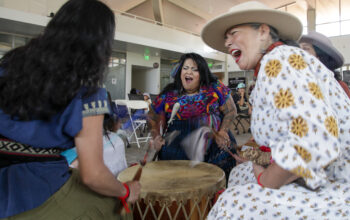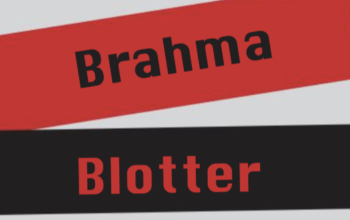The future location of the proposed Digital Arts and Media building continues to be up in the air after updates on the project last week discussed alternative options.
The scenarios presented to the user group are to renovate the current library building, renovate the village 8200 just for Media Arts, or reduce the size of the proposed building.
The ongoing discussion about the Digital Arts and Media building plan leaves the former library empty as it becomes more evident that limited space on campus is a common issue among all departments.
Assistant professor of photography, Sean McDonald, voiced his discontent with the current housing for media arts, at Tuesday’s meeting. The department has been constantly in trailers and moved about the campus since its beginning.
“I’m in a trailer that could fall apart in the next three to five years,” McDonald said.
Project Manager Ed Cadena said the project is $5 million over budget at the Pierce College Council meeting on Feb. 25. Members of the Facilities Advisory Committee, discussed potential campus repairs and upcoming construction projects at a meeting on Tuesday March 15, 2016.
Following Tuesday’s meeting, Rolf Schleicher, vice president of Administrative Services, told the committee that the budget has to be talked about due to lack of funding. Funds need to be allocated, and the priority list for construction needs to be discussed. Some projects may be deselected and defunded in order for higher priority projects to be completed, according to Schleicher.
With continued construction and Pierce College expecting new hires, another use for the building was introduced at Tuesday’s meeting. The idea that the building would be offices for incoming staff, since there is not enough space due to ongoing construction.
Sheri Berger, vice president of Academic Affairs, told the FAC that she was representing the user group at the meeting. Berger said that the user group had stated at Friday’s meeting that, “something would be better than nothing.”
According to the College Project Director Ed Cadena, the modification of an existing building is problematic. The location of the former library is near a retaining wall at the base of the art hill. Cadena said that when a retaining wall is included in a project it costs millions of dollars.
According to the FAC charter sheet that outlines the committee’s responsibilities, “The FAC reviews all developments and implementation of the college’s overall bond program planning efforts. The FAC reviews all proposed bond-funded projects to ensure that they meet the requirements of the college’s Educational Master Plan and the long-term goals of the Facilities Master Plan.”
McDonald also said that Media Arts at Pierce college has never had a permanent location on campus.
Monika Del Bosque. Associate Professor of art and Director of the Art Gallery, said she tries to make the best of the limited space she has to teach students, and to showcase art to the community.
Del Bosque said that the current gallery space is very small and limits the types of shows that can occur. For example, the current space is too narrow and cannot accommodate for large paintings to be properly displayed nor can large artwork be viewed by large crowds.
Another issue is the pantry space where Del Bosque stores, prepares, and teaches her students about exhibition techniques. The pantry houses a kitchenette, a janitor’s closet, and wall to wall, floor-to-ceiling storage racks filled with supplies and art work. This already small space becomes cramped each semester when art students gather around to learn about proper exhibition handling and preparation techniques. According to Del Bosque.
Del Bosque has resorted to taking her students off-campus to art museums, in a process she calls “guerrilla exhibition handling and prep” to learn how to properly store and care for art that is going to be in an exhibition.
The Digital Arts and Media Building project is currently in planning at a budget of $32,950,719 and is set to be completed in 2020, according to data from Nov. 2015, on “Buildlaccd.org.
Bonds are the main source of funding for campus projects district-wide. Essentially, a bond is proposed by the district to local registered voters, who may or may not agree to pay more taxes in order for school campuses to be improved.
When a bond is favored by voters and receives enough votes to pass, the district’s jurisdiction receives the funding over the course of 30 or more years.



